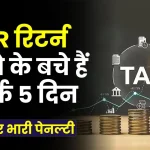
In times of urgent need, many people ask the crucial question: “FD vs loan: Should I break the FD or take a loan on it?” While banks and chartered accountants (CAs) may give you standard advice, the full picture is rarely discussed. This guide breaks it all down in plain language so you can make a smart, well-informed decision based on facts, expertise, and your personal situation.
FD vs Loan: Should I Break the FD or Take a Loan on It?
| Point | Details |
|---|---|
| FD Breaking Penalty | 0.5% to 1% deduction on applicable interest rate (varies by bank) |
| Loan Against FD Interest | Generally FD interest rate + 1% to 2% |
| Loan Processing Time | Instant or same-day with minimal paperwork |
| Impact on FD Earnings | FD continues to earn full interest even when used as loan collateral |
| Loan-to-Value Ratio (LTV) | Usually 90% of FD value |
| Best Option When | Loan is cheaper than FD penalty and you can repay easily |
FD vs Loan: Should I break the FD or take a loan on it? Now you know: in most cases, taking a loan against FD is the smarter move. It protects your interest earnings, avoids penalties, and gives you liquidity without stress.
Before making a move, always calculate the effective loss from breaking the FD versus the interest cost of a loan. A few percentage points can save (or cost) you tens of thousands.
What is an FD and How Do Loans Against It Work?
A Fixed Deposit (FD) is a savings instrument where you lock in a lump sum for a fixed tenure at a predetermined interest rate. It’s one of the most popular investment tools for Indian families thanks to its safety, predictability, and decent returns.
But what happens when you’re in a cash crunch and need immediate funds?
You have two choices:
- Break the FD prematurely
- Take a loan against the FD
see also: Punjab National Bank Fixed Deposit (FD) Interest Rates 2025
Option 1: Breaking the FD – Quick Cash, But At What Cost?
When you break your FD before maturity, the bank typically reduces your interest rate to the applicable rate for the actual period the FD was held. On top of that, you’ll likely face a penalty of 0.5% to 1% on the reduced interest.
Example:
Let’s say you booked a 5-year FD at 7.5%, but you break it after 2 years. If the 2-year FD rate is 6.5%, and the penalty is 1%, you’ll effectively earn only 5.5% interest instead of 7.5%. So you lose on two fronts: lower returns and penalty deductions.
Option 2: Loan Against FD – Borrow from Yourself
Banks offer loans against your FD at an interest rate that is typically 1% to 2% higher than your FD rate. This means your FD continues to earn interest, and you can access funds without actually touching the deposit.
Why This Option is Smarter:
- No Penalty: You don’t lose out on the FD interest.
- Quick Funds: Loans are disbursed almost instantly.
- Low Interest Rate: Much cheaper than personal loans.
- No Credit Score Impact: Since it’s secured, your CIBIL score isn’t affected.
- Flexible Repayment: You can pay it off before FD maturity without major charges.
Comparative Breakdown: FD Breaking vs Loan Against FD
| Criteria | Breaking FD | Loan Against FD |
|---|---|---|
| Speed | Immediate | Immediate |
| Penalty | Yes (0.5% – 1%) | No |
| Interest Lost | Yes | No |
| Loan Limit | Not Applicable | Up to 90% of FD |
| Repayment | Not Applicable | Required, flexible terms |
| Credit Impact | None | None |
| Continued FD Returns | No | Yes |
When Should You Break the FD Instead?
There are specific situations where breaking the FD might make sense:
- If you can’t afford monthly repayments.
- If your FD is very short-term and the penalty is negligible.
- If you need more than 90% of the FD value.
But in most cases, especially if the FD has a long tenure, taking a loan is smarter.
Real-Life Scenario: Which One Saves You More?
Let’s say you have an FD of ₹5,00,000 at 7.25% for 5 years.
- Breaking It After 2 Years:
- Applicable rate = 6.25%
- Penalty = 1%
- Effective rate = 5.25%
- Interest earned = approx ₹50,000 less than expected
- Loan Against FD:
- Loan interest = 8.25% (FD rate + 1%)
- FD continues earning = 7.25%
- Net cost = ~1% difference
- Loan can be repaid anytime without penalty
Conclusion: You save more by taking the loan and letting your FD grow.
How to Take a Loan Against FD
Step 1: Contact Your Bank
Use internet banking or visit the branch to request a loan against FD.
Step 2: Check Eligibility
Most banks allow this facility if your FD is:
- In your name
- Not in joint account with restrictions
- Not tax-saving FD (those have 5-year lock-ins)
Step 3: Submit Application
Minimal paperwork. Often, just Aadhaar, PAN, and FD receipt.
Step 4: Get Disbursement
Loan is credited to your savings account, usually within hours.
Step 5: Repay with Flexibility
Pay interest monthly or at maturity. Some banks allow bullet repayment.
see also: Fixed Deposit Interest Rates: Invest ₹10 Lakh and Get a Profit of ₹1,40,000.
FAQs About FD vs Loan Decision
Q1. Can I take a loan against a joint FD?
Yes, but only if all joint holders give consent.
Q2. What happens if I default on the loan?
The bank will adjust the dues from your FD amount.
Q3. Is loan against FD available online?
Yes, most major banks like SBI, HDFC, ICICI, Axis offer online facilities.
Q4. Will taking a loan against FD affect my credit score?
No, since it’s a secured loan.
Q5. Can I prepay the loan anytime?
Yes, usually without penalty.











